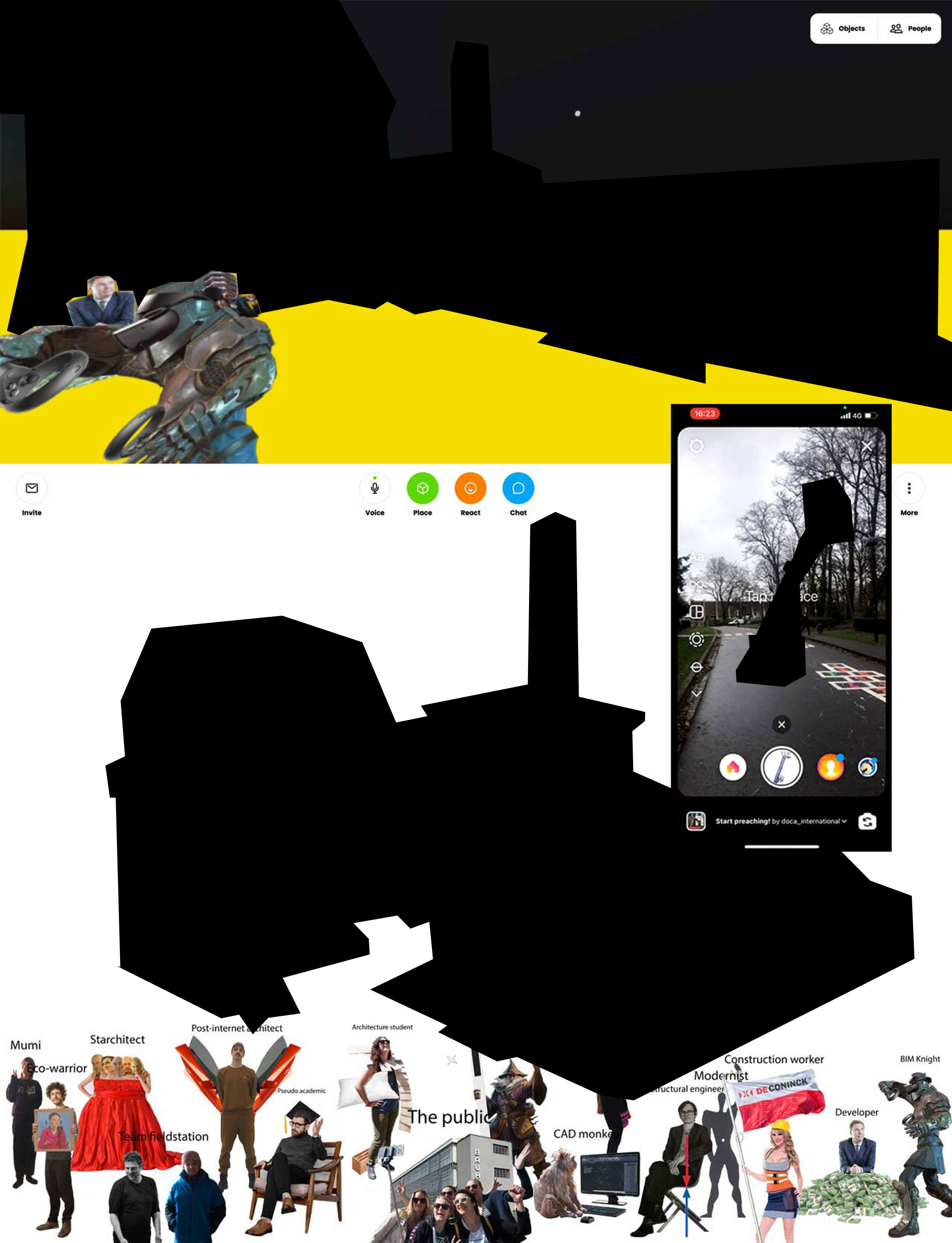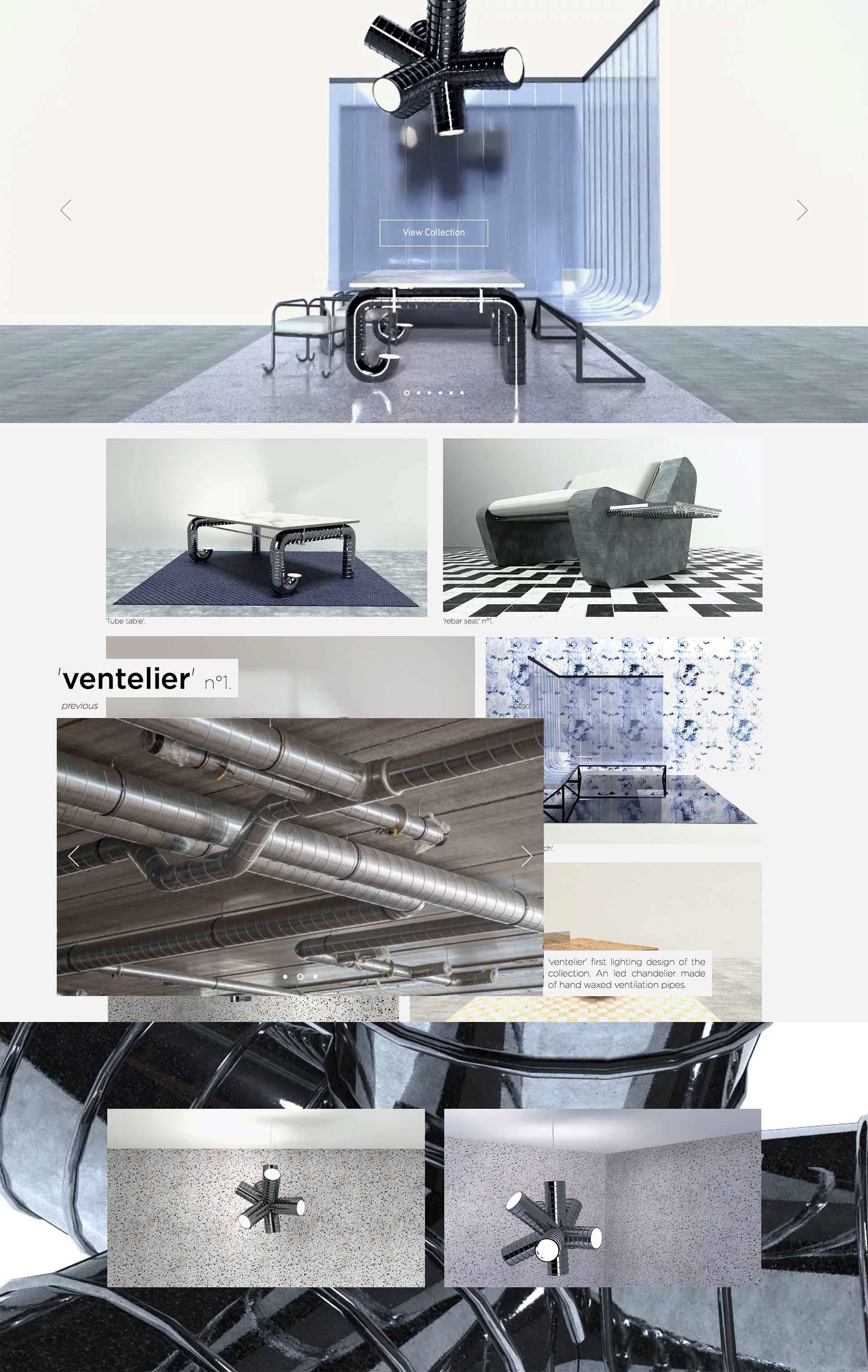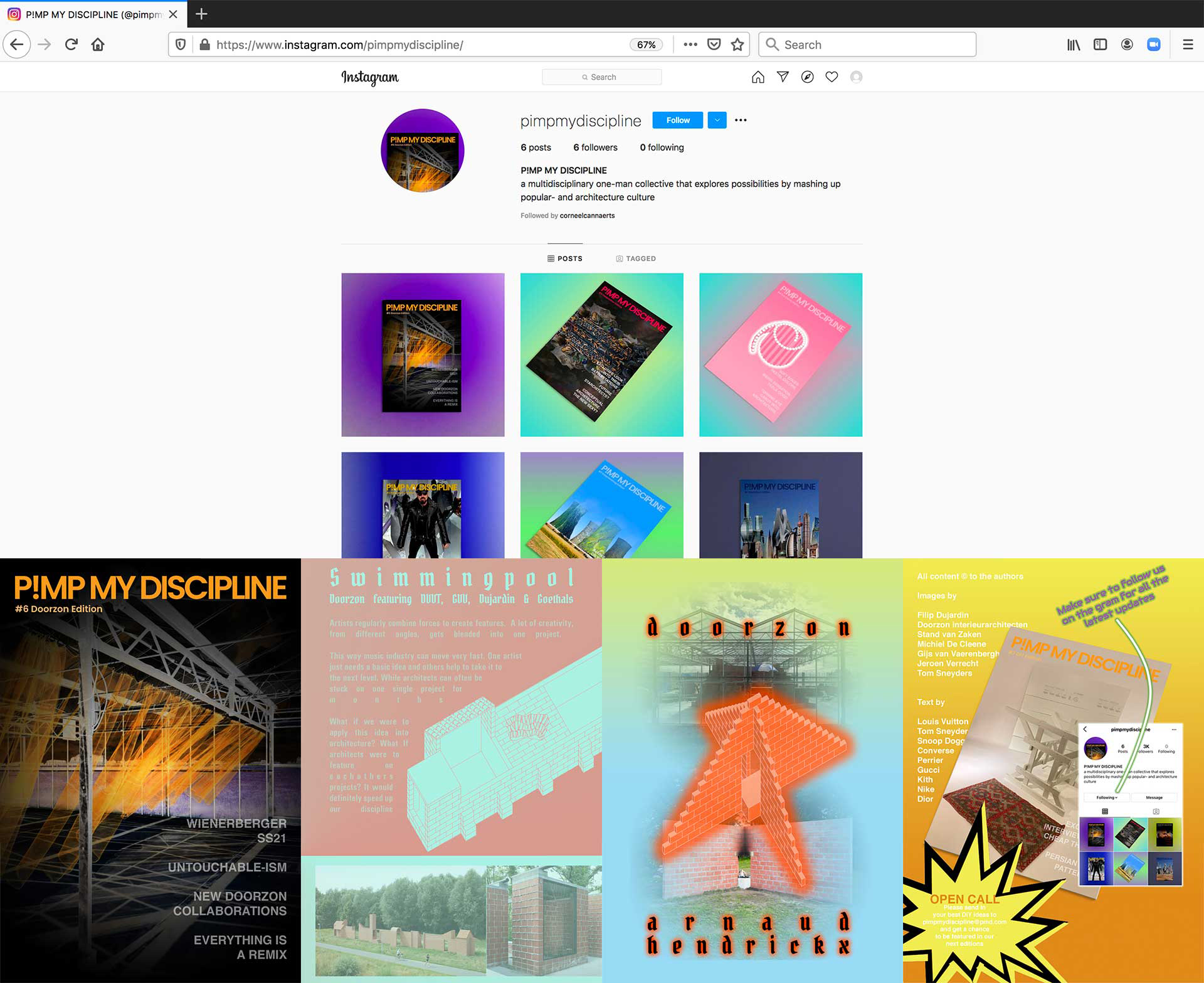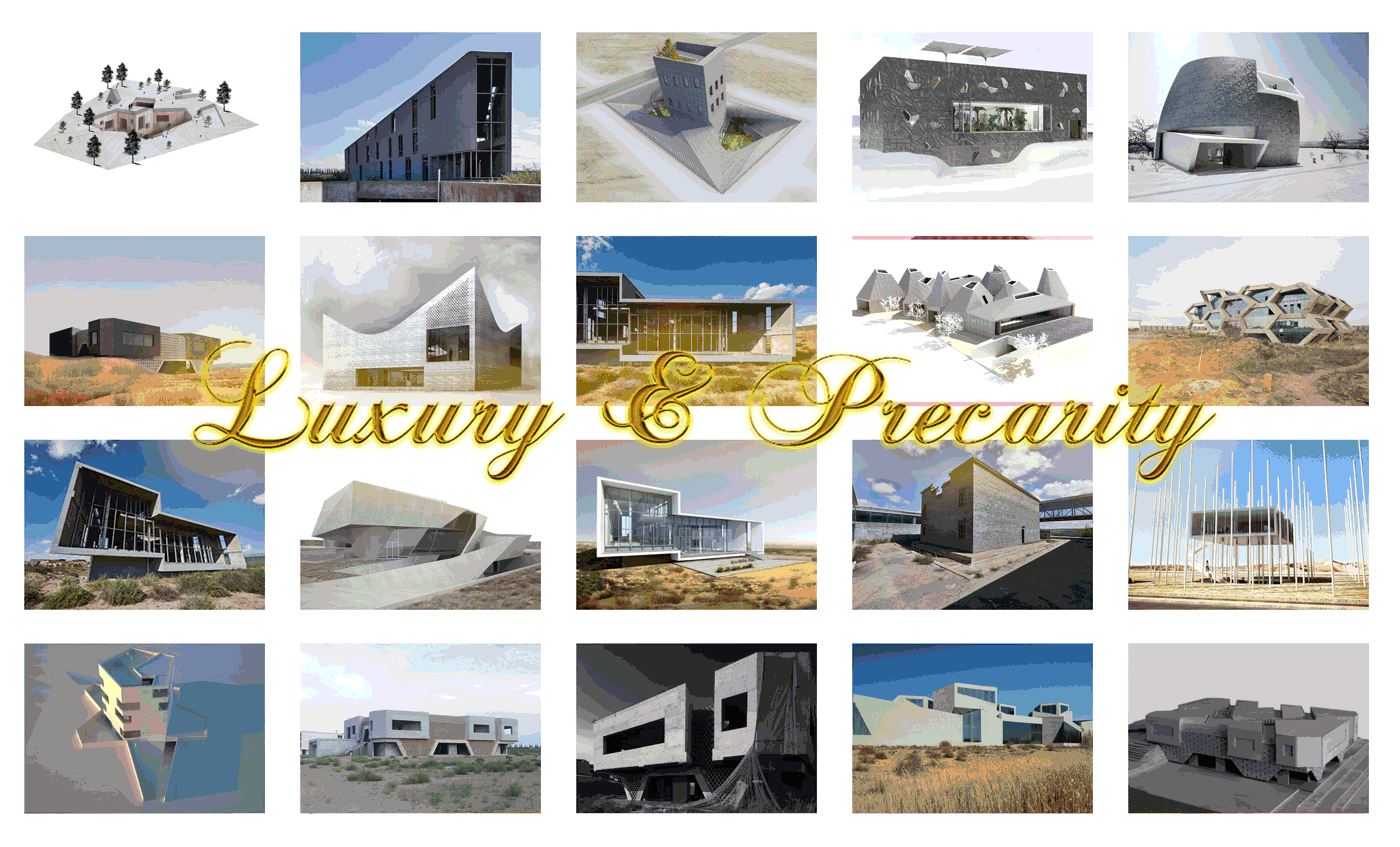Fall semester 2020 - 2021
As a practice delineating and claiming space, architecture is intimately linked with societal, economic and political manifestations of power relationships. Luxury - defined as ‘a state of great comfort or elegance, especially when involving great expense’ or the ‘habitual use of, or indulgence in what is choice or costly, whether food, dress, furniture, or appliances of any kind’ and ‘sumptuous and exquisite food or surroundings - has been used throughout architectural history to express societal standing and power.
The sumptuous display of material wealth by those in power simultaneously gives rise to those facing the precarity of lacking such amenities. Social struggle, representative democracy, industrial means of production have led to the emergence of a middle class, making the luxuries, such as architecture, an achievable goal for an increasingly large number of people. While only partially, temporally and locally, realising the egalitarian utopia of modernism, it spiralled into an unseen consumption of resources, and the instalment a of neo-liberal market economy based on unsustainable growth and consumerism. Wealth and power is increasingly concentrated in the hands of a small number of corporations and individuals, the middle class is eroding into a global precariat living and working in uncertain conditions.
Emerging technologies are accelerating these evolutions: increasing resource depletion to provide the hardware for our planetary accidental megastructure and fuel the global demand for shipping and transportation. The emergence of a platform economy, leading the precarity of gig workers as well as opportunities for organising labour and ownership differently. The media ecology in which we operate, the impact of the blogosphere, social media and image sharing, where influencers compete for our attention.
In this edition of Fieldstation studio we will use the notions of luxury and precarity to question architecture’s position in relation to the technosphere and the anthropocene in these precarious times. We will look into luxury and precarity as a content and context for architecture through fieldtrips, research and hands-on design exercises.
PARTICIPATING STUDENTS
David Van Oostende, Enrico Pavone, Mostafa Khamis Abuahmed ,Arnaud Bailyu, Julot Barbe, Mumtaaz Viaene, Stan Vrebos, Tomás Vidal García, Margarita Egorova, Tom Sneyders, Michiel Swerts, Kinga Malgorzata Wiercioch, Marta Ewa Wisniewska
PART I:FIELD GUIDES
Living & Working [Download].
Luxury & Precarity of the Rendered Reality [Download].
Luxury & Precarity of Isolation [Download].
Luxury & Precarity of Isolation - Postcards [Download].
Material Articulation [Download].
Mediated Luxury & Precarity [Download].
PART II:SELECTED WORKS
UNION - STAN VREBOS
Generally speaking, architecture is perceived as a gentlemanly profession. But the current working conditions are causing our job to have more in common with a traditional worker, rather than the bourgeois image. Unpaid internships, overtime and normalising late working hours stretched during the weekends are broadly accepted in our culture. There is this phenomenon named ‘the calling’ which states that because we’re following our passion, we don’t mind getting underpaid. On a larger scale architects are just as much pawns in the rising gig economy as traditional workers, but we keep on clinging on the thought of it being for the greater good.
The economy is based on freelancers, resulting into precarious working conditions and short term contracts. Competitive, individual and hierarchal feelings prevail, very similar as the education itself. This individuality also comes forth in the positioning we take in towards society or questions we ask ourselves about the system we work in. As an architect you can be individually against real estate and the short term profit that fuels this capitalistic development, you can actively pursue ecological design methods or only focus on community based design, but this isn’t enough. You can reflect on systematic, patriarchal, colonial and precarious working conditions, but this isn’t enough. Get up, join forces and challenge the status quo. Not only will our working conditions get attention, but what we stand for too. The public will have insight on the why and the how. When we gather as one, our visions become streamlined.
Our design focus deserves a contemporary shift, positioning itself in the bigger picture of the Anthropocene. Ecology, urban sprawl, inequality, labour conditions, technology and many more have a huge impact in the way we design or should design. Escape the individual quest towards the title starchitect. Practicing architecture is not valued by the society as much as the people who spend their whole life indulging in it, it is often considered too expensive or even not necessary. As long as architects design for other architects, the architecture bubble stays intact. This bubble should be punctured. History shows that change happens faster if you alter demand before you push supply. Let’s show the public what architecture can mean for society again and how we perceive the problems we collectively face. It has been since the CIAM conventions that a group of architects opened the discussion towards the public and had such a significant influence across the globe. This force was only possible through combining thoughts and expertise between the finest architects and exposing their worldview to the people.
There is need for a place to debate on these topics and address them as a union of architects. Need for a temporary and flexible discussion space that can easily be built up anywhere across the globe. Not on a seclusive location as Venice or Dubai, but in an inclusive way. But this only acts as a physical space. In a time where movements start on social media, this movement could do so too. Current digitalisation clears the path of spreading the message online. Creating an image will increase the online presence. It is easily used as an Instagram filter, with the purpose of placing the symbol anywhere you think the discussion should be held. Whether it is to talk about our working conditions, the collective challenges we face or the public that should get involved.
Digital revolution is the only way to keep up with the current pace of movements, but it will need physical attendance as a follow-up. The symbol is a design approach challenging our view on how we build. It is not build in real-life, as I don’t think I alone can come up with a solution. It’s an ice-breaker. A symbol that stands for the relation of the architect towards the construction site, the virtualisation of space, our precarious working conditions, open source architecture and the unified whole we should form.

FEED - ENRICO PAVONE & DAVID VAN OOSTENDE
In our field guide - The Luxury and Precarity of Rendered Reality – we researched various ways in which reality is being manipulated or altered. We specifically focused on interventions through artistic representations as well as interference through technological advancements.
In the first phase of our project, the greenhouse becomes a green-screen-house: a virtual set where worlds are created. The goal: to sell objects.
As the project developed, we incorporated our findings into the project. We discovered themes that rock our boat and found sparks that ignited heated discussions. All that energy became the life blood of our project: the topics/sections that make up our field guide. We worked with our gut, shared philosophies, made compromises and were able to produce a joint effort. This collaboration became a lens, through which we look at: escapism, mass production, the consumption of resources and rendering processes.
The original context of the greenhouse, the mass cultivation of tomatoes, meets the current context, a practice grounds for design, in a hyper-real vision of an automated design factory.
This project reflects on the potential next phase of production in the greenhouse.
We aim to present a futurist vision of the greenhouse. Corporate. Commercialized. An adapted view which fine-tunes the production process and aims for the highest yield.
As such is what we generate fundamentally disconnected from the original, analogue production process of Doorzon. The factory offers staging, manufacturing, and logistics and, as we see in the video, has been working on ways to access this rendered reality ... .
META GREENHOUSE - MICHIEL SWERTS
How will we perceive the world around us in the future? How does the rising number of technological tools for visualizing, portraying and staging our surroundings in a realistic way, change our perception of the world. How will this change architecture? Is our spatial memory becoming a blended reality of different media? Are we actually losing our sense of reality?
With my project I make people question their reality and the authenticity of it. By imitating, editing, remodelling and staging the greenhouse in combination with different types of media, one starts to doubt his surroundings. During the video the viewer encounters these different types of media and the qualities and anomalies that are associated with them.
In the end, what is reality? Does someone in the end even care that his environment is not real? Maybe the future is living in a completely green room where everything one sees is a virtual object. Would someone even care that it’s just a green box if it looks like a Bouroullec Ploum.
L&P THROUGH DESIGN - ARNAUD BAILYU
L&P (Luxury and Precarity) is a brand exploring the tension of how hidden materials can manifest themselves into luxury. L&P approaches the content and context in the materialization of architecture.
Through Design is a collection that starts from construction materials and translates them into “spatial” designs. These are somewhere between art and design. All the pieces are handcrafted on local playground with an honesty of the chosen materials.
through.design [Instagram].L&P Threugh Design [Website].

P!MP MY DISCIPLINE - TOM SNEYDERS
EMBRACE THE DISCIPLINE - EMBRACE THE HYPE - HYPE THE DISCIPLINE
Due to continuous technological advancements people are oversaturated by hyper luxury. Rappers show off their cribs on television, influencers promote brands they are sponsored by on social media, project developers create renders with designer furniture and expensive cars. In field guide ‘How is luxury mediated?’ this is divided into four categories: branding, phrasing, framing and staging. Each of these categories add to the creation of ‘hypes’ in popular culture. Popular culture moves very fast, it embraces the ‘hype’ and tries to take it to the next level. Architecture culture moves very slow, it’s stubborn and denies the ‘hype’. Even though it’s often clearly present. What can we as architects learn from this? And how can we apply this into our own discipline? How can we, workers of a very slow profession, survive in this fast changing and image dominated world? In ‘P!mp my discipline #6 Doorzon edition’ we elaborate further on these questions and apply them to the greenhouse in Landegem.
pimpmydiscipline [Instagram].
